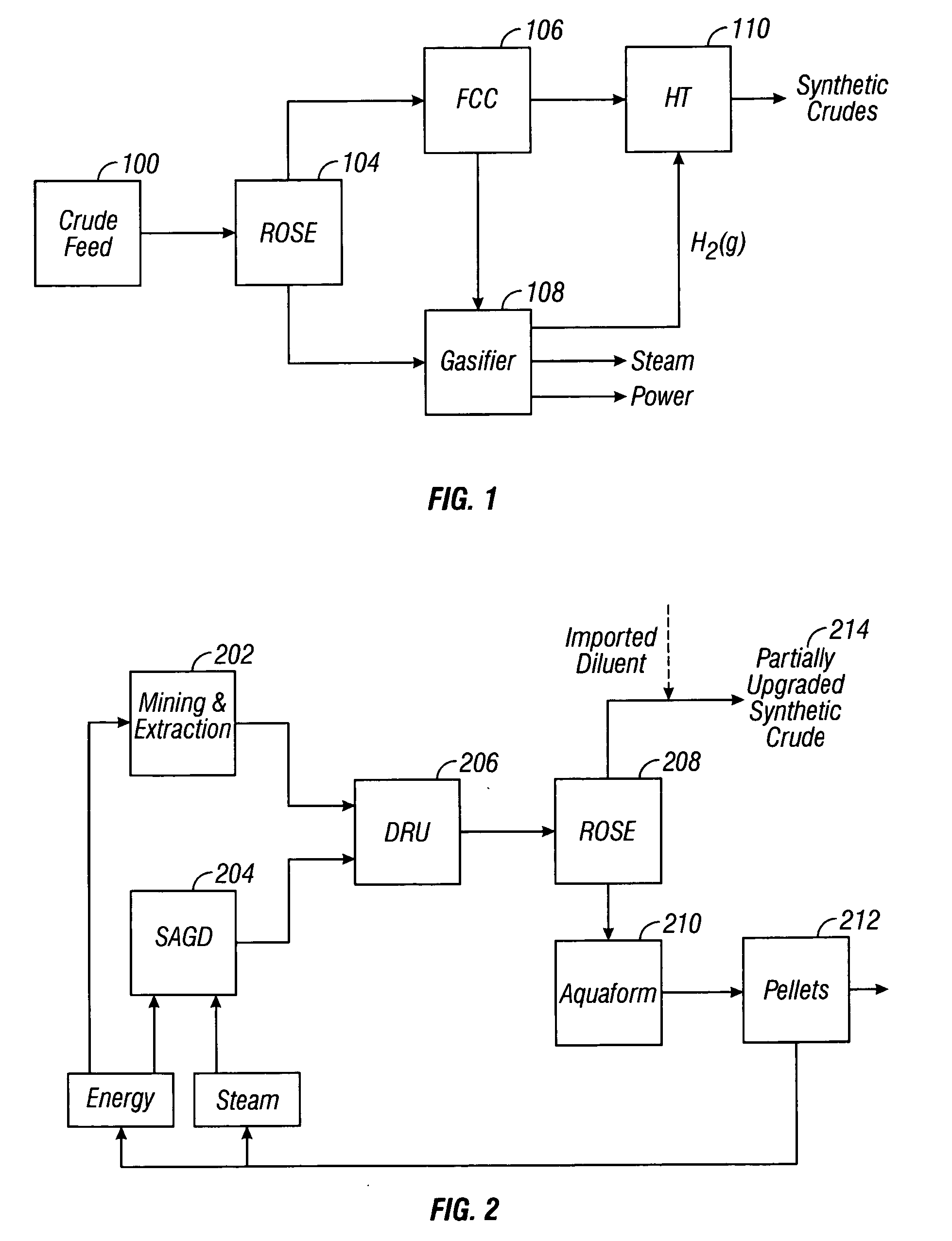Heavy Oil and Bitumen Upgrading
a technology for applied in the field of upgrading heavy oils and bitumens, can solve the problems of tar sands, posing additional problems in the upgrading of crude oil, and posing processing problems, and achieve the effect of low metal conten
- Summary
- Abstract
- Description
- Claims
- Application Information
AI Technical Summary
Benefits of technology
Problems solved by technology
Method used
Image
Examples
Embodiment Construction
[0028] Detailed embodiments of the present invention are disclosed herein. However, it is understood that the disclosed embodiments are merely exemplary of the invention, which can be embodied in various forms. Specific structural, functional and process details disclosed herein are not intended to be limiting, but are merely illustrations that can be modified within the scope of the attached claims.
[0029] The present invention can convert heavy oils and / or bitumen having a high metal content to lower boiling hydrocarbons having a substantially reduced metal content. The present invention can also provide for the simultaneous production of asphaltenes for use as fuel in the generation of steam and energy necessary for the production of the heavy oil or bitumen. A first portion of the metals is removed during solvent extraction of the heavy oil or bitumen feed, with substantially all remaining metals being removed during subsequent treatment in an FCC unit. The present invention pro...
PUM
 Login to View More
Login to View More Abstract
Description
Claims
Application Information
 Login to View More
Login to View More - R&D
- Intellectual Property
- Life Sciences
- Materials
- Tech Scout
- Unparalleled Data Quality
- Higher Quality Content
- 60% Fewer Hallucinations
Browse by: Latest US Patents, China's latest patents, Technical Efficacy Thesaurus, Application Domain, Technology Topic, Popular Technical Reports.
© 2025 PatSnap. All rights reserved.Legal|Privacy policy|Modern Slavery Act Transparency Statement|Sitemap|About US| Contact US: help@patsnap.com



